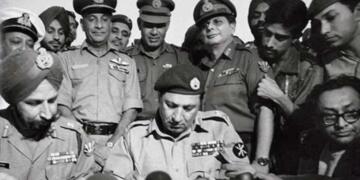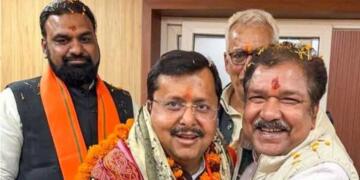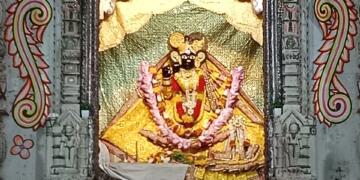The CAA-NRC protests have now hit the state of Himachal Pradesh causing unrest and violence, with attacks on Hindu Temples and Shivlingas.
As per a latest report, a Shiva Temple was attacked in Dharamshala when it was dark. The Shivlinga was broken, and both the Shiva sculpture and Shivlinga were defiled and thrown out of the temple premises by the miscreants. The Nandi Bull sculpture is also missing.
According to a child living in the area, it was a woman who defiled the Temple. When the child tried to raise alarm, the woman simply fled from the scene.
But this is not a solitary incident in Himachal Pradesh which suggests the rise of anti-Hindu forces in the state. Recently, a similar incident took place in the Chamba district, a Shiva statue was broken two times. After the local administration and Panchayat got it constructed again, but it was attacked again by miscreants last week.
Such incidents are taking place in the larger context of anti-CAA/ NRC protests turning grossly communal and Islamist. This raises the suspicion of rise in religious extremism in Himachal Pradesh.
While the Hindu majority state of Himachal Pradesh with 2.18 per cent Muslim population, doesn’t have a history of communal clashes or tensions it has had a bitter memory from more than two decades ago.
In 1998, Chamba district- the same area where a Shiva statue has now been defiled was hit by a terror attack. 35 people had been massacred in this attack which was carried out by Islamist terror organisation, Laskar-e-Taiba.
Chamba borders the Doda district of Jammu, which has itself been infested by terrorism with active involvement of Islamist terror outfit, Hizbul Mujahideen in the area. Therefore, Chamba sits in a rather vulnerable position as far as assaults from extremist elements is concerned.
In fact, anti-CAA/ NRC protests have hit the state of Uttarakhand too. Even the Capital city of Uttarakhand has been witnessing Shaheen Bagh like sit-in protests. Haldwani that falls in the Kumaon division of Uttarakhand too has witnessed similar protests. As such protests have been organised in the foothills of both Garhwal and Kumaon region.
Senior Congress leader and former Uttarakhand Chief Minister, Harish Rawat too has attended such protests and such political backing can further incite extremist sentiments in the state. Anti-CAA protests are going on in Uttarakhand since December last year.
Uttarakhand has the image of a peaceful, hilly state just like Himachal Pradesh. In fact, bulk of major Hindu pilgrimage centres- Rishikesh, Haridwar, Gangotri, Kedarnath and Badrinath fall in this state.
However, the changing demographics of Uttarakhand have already been seen as a cause of concern. According to 2001 Census, Muslim population in the state was 11.9 per cent. It rose quickly to 13.95 per cent by the 2011 Census.
The foothill districts and towns of Uttarakhand- Uddham Singh Nagar, Roorkee, Dehradun and Haridwar are bordered by Uttar Pradesh districts such as Muzzafarnagar, Moradabad, Bijnor and Bareilly that have heavy concentration of Muslim population. Rise in Muslim population in Uttarakhand can be attributed to migration from Uttar Pradesh to Uttarakhand.
In areas like Haldwani and Roorkee, the Muslim population is around 31.89 per cent and 23.62 per cent respectively. While the Muslim population is very low in the hilly districts, the majority of Muslim population is concentrated in the foothills of Uttarakhand hills.
Anti-CAA/ NRC protests have taken a violent turn in several parts of the country. The basis of the protests has been religious hatred and extremism. In such circumstances, the anti-CAA lobby might try to spread rumours and incite communal tensions by misleading the growing and sizeable Muslim population in the state. As such, anti-CAA/ NRC protests in the state don’t augur well for its communal harmony.
With this it seems that Islamism is spreading into areas which were once considered largely peaceful, remote. The attacks on Shiva temples in Himachal Pradesh and Harish Rawat supported CAA-NRC protests in Uttarakhand manifest the rise of Khilafat 2.0 in the Himalayan states.

































